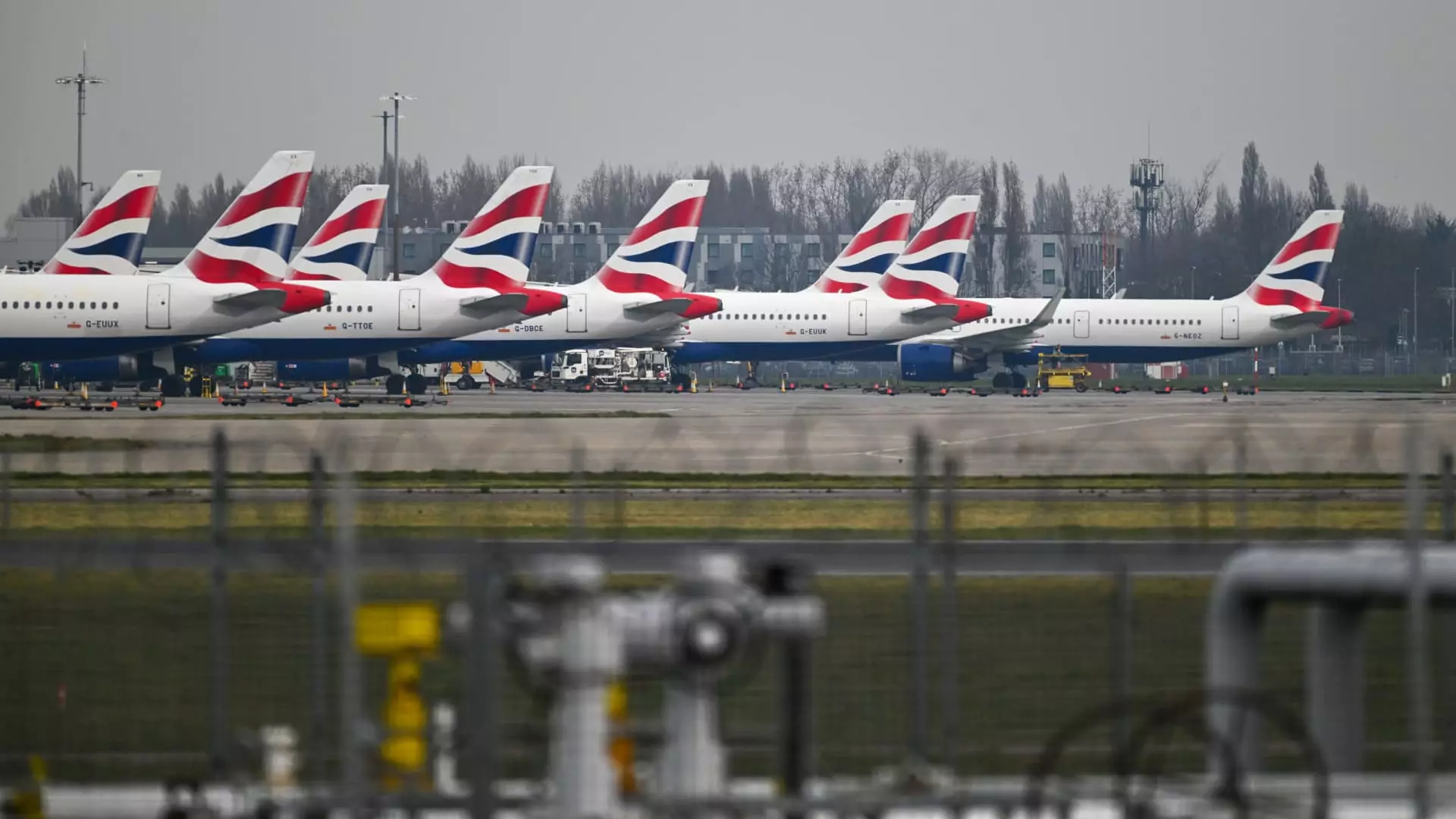On a seemingly ordinary Friday, London’s Heathrow Airport, the crown jewel of European air travel, was thrust into chaos due to a devastating fire at an electrical substation. This incident not only disrupted operations at the world’s busiest airport but also exposed glaring weaknesses within the UK’s infrastructure. The closure, resulting in over 800 canceled flights, stranded tens of thousands of travelers. The government and industry regulators must reevaluate how our critical infrastructure is maintained and managed, especially in an age that demands seamless connectivity.
The fallout from the fire prompted immediate responses from Heathrow’s management and airlines, all looking to mitigate the disaster’s impact. More than 120 flights were already airborne when the news broke, leading to diversions and unscheduled returns, effectively compounding the chaos. Yet, amidst all the confusion, there is a silver lining: this incident is a wake-up call prompting necessary discussions on the resiliency of infrastructure in modern society.
The Role of Regulatory Oversight in Crisis Management
In the aftermath of the fire, the Metropolitan Police confirmed that there were no signaling of foul play; nevertheless, the involvement of the Counter Terrorism Command raises eyebrows. With such a critical national infrastructure severely affected, one can’t help but wonder: why did it take a disaster of this magnitude to highlight vulnerabilities? As pointed out by numerous industry experts like Willie Walsh, the CEO of the International Air Transport Association (IATA), Heathrow’s dependency on a single power source stands as a colossal oversight. What is the point of investing in high-tech airports if the basics of redundancy and resilience are overlooked?
This is not merely an isolated incident; it is a cautionary tale highlighting the urgent need for stricter regulatory frameworks that prioritize infrastructure reliability. The apparent lack of alternatives for energy provision renders Heathrow vulnerable. Questions of accountability must also be addressed, as shifting the financial burden onto airlines during infrastructure failures is not a sustainable solution. Airline companies shouldn’t bear the entire cost of travel disruptions; instead, operational resilience should be a shared responsibility between governmental bodies and infrastructure operators.
Emotional Toll on Travelers and Stakeholders
Beyond the immediate logistical nightmares faced by passengers, the emotional toll cannot be understated. Families separated, business travelers left in the lurch, and holidaymakers stranded during peak travel times encapsulates a broader systemic failure. British Airways suffered especially hard, canceling over half of its flights as panic swept through social media platforms where frustrated travelers sought information and reassurance. Such disarray not only tarnishes the reputation of airlines but also impacts the broader UK travel and tourism sectors economically.
Anita Mendiratta, a prominent travel consultant, emphasized that Heathrow’s role extends far beyond carry-on luggage and boarding passes; over 4,000 tons of cargo pass through its terminals every single day. The ripple effect due to disturbances in air traffic and freight handling can severely impact various industries reliant on timely deliveries. Therefore, it becomes even more pressing to assess the full scope of this shutdown and its far-reaching consequences.
Lessons Learned: Vigilance Required for Modern Infrastructure
What can we glean from this debacle? Firstly, infrastructural resilience must be baked into the very core of operations, with multiple fail-safes and alternative systems in place. The National Grid’s response echoed a concerning sentiment—do we have enough contingency plans to face unprecedented challenges? As UK Energy Minister Ed Miliband pointed out, it’s critical to understand why such failures happen and how to fortify our infrastructure against them. The status quo must evolve, with a concerted effort to learn from these failures so that the future of air travel can be protected.
Indeed, while the fire’s origin and impact will remain under investigative scrutiny, it is those operational policies and planning mechanisms that require newfound attention. A modern infrastructure is only as resilient as its weakest link, and if we continue to prioritize short-term efficiency over robust infrastructures, we pave the way for future catastrophes.
In sum, the Heathrow Airport fiasco serves as a crucial reminder that our infrastructure and its management need to be reexamined. The emotional and practical ramifications of this incident are severe, but they should also inspire a broad rethinking about how we ensure resilience in our critical systems. A future free from such disasters needs careful planning and strategic foresight, and it’s time stakeholders pay attention.

